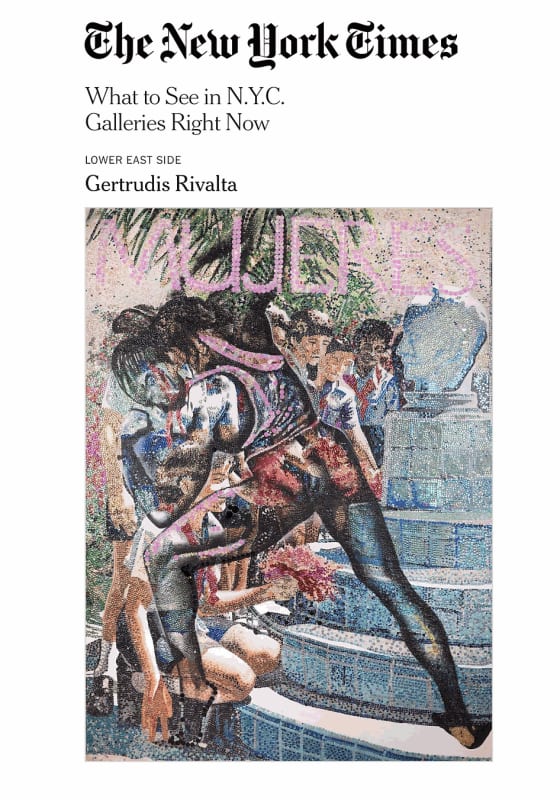There are two popular magazines — Muchacha and Mujeres — that the Cuban-born and educated artist Gertrudis Rivalta cites in “Selected Pages,” her solo exhibition of dioramas and paintings. Rivalta aptly uses the show to represent her own psychological and intellectual development from girlhood to womanhood in a culture where immense forces sought to shape that transition, among them: Negritude, racism, colonialism, Soviet-Cuban solidarity, and the persuasive power of the language of publicity.
Mining the material culture of her childhood, Rivalta reinvents the magazine covers using nontraditional materials like sequins, at once visually seductive, commonplace and aspirational. But her canvases represent the confluence of even more intricacy. Take “Cheerleaders” (2009), with its underlying image of schoolchildren laying a wreath by a bust of José Martí, a national hero venerated for his role in liberating Cuba from Spain. Superimposed is an image of an unnamed Black female athlete flexing her muscular body in the opposite direction, turning her gaze inward instead of fixing it on Martí’s bust. The artist understands that what she calls “the euphoria of liberation” isn’t enough to sustain her growth or nurture her self-determination.
Installed in the back of the gallery are very different works: paper and canvas dioramas that operate as small puppet theaters rich in narrative exposition and historical allusion. In all, “Selected Pages” has a wonderful, novelistic premise: We can grasp the complexity of a culture by seeing it through the eyes of an astute observer who came of age in it.
SEPH RODNEY


